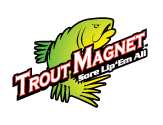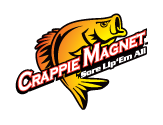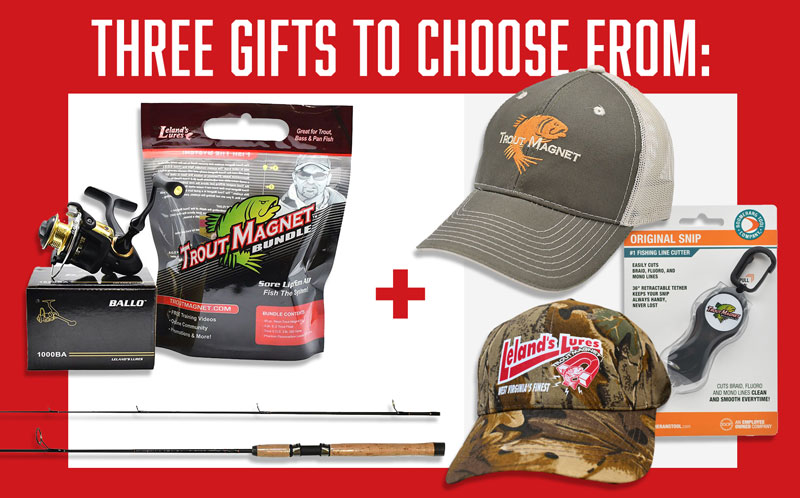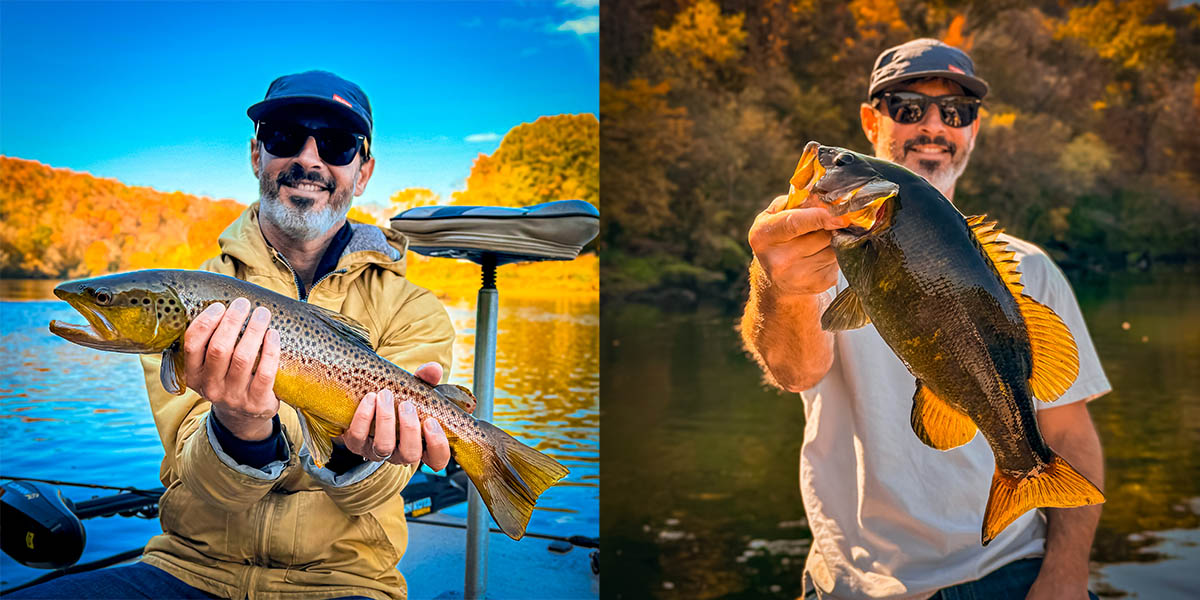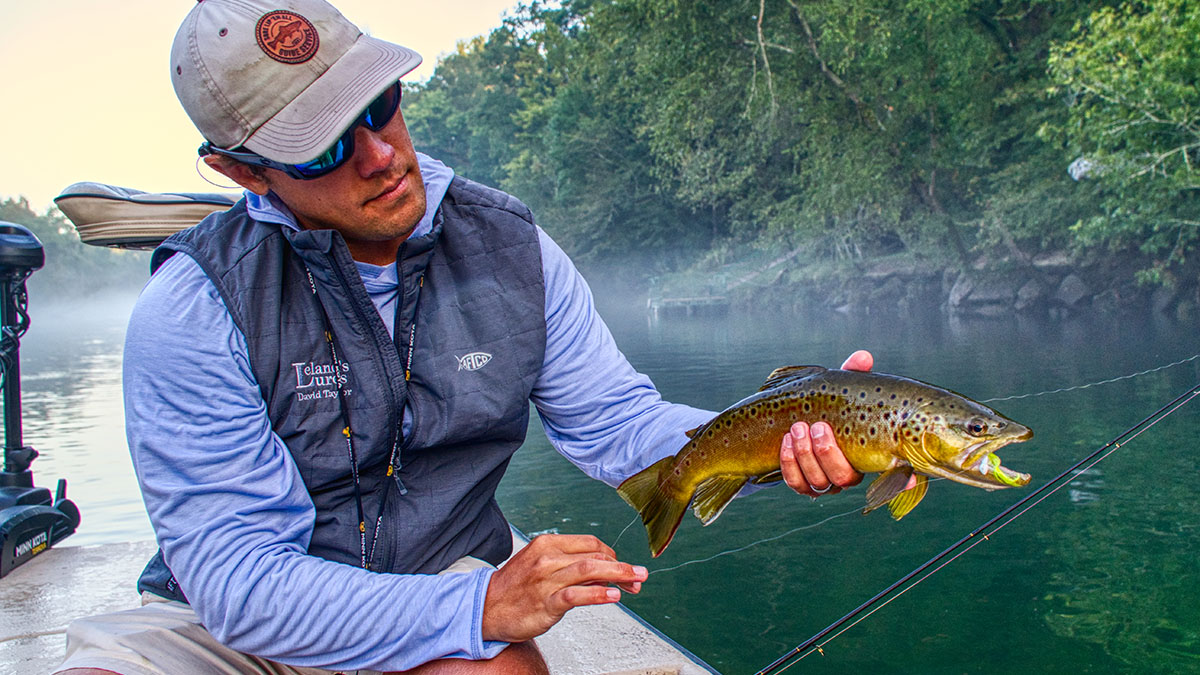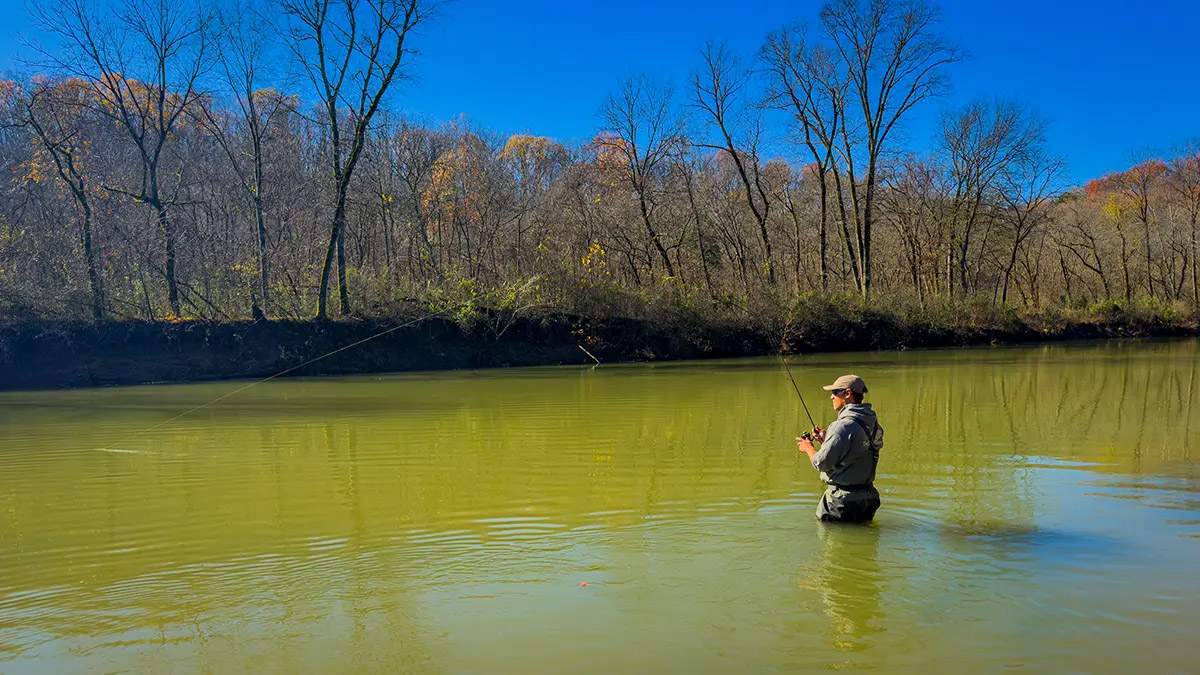When my wife and I left Little Rock, Arkansas and flew into Missoula, Montana, little did we know that it was the smallmouth bass that would be the cherry on top to the trip. When you think of Montana fishing, you think of A River Runs Through It and the immense fly fishing culture. I was already there to go against the grain as all I packed was two spinning rods, Trout Magnets, and D2 Jigs. We had five days to explore and had booked two trips with Montana Fishing Guides.
Rob Weiker has spent his life building up the outfitter into what it is and is a true example of professionalism. Rob is also one of the only outfitters to offer guided ice fishing trips. While that wasn’t on the table for this trip, ice fishing is something that requires tiny jigs and spinning tackle. Rob was gracious enough to let me bring my own tackle and find out how our methods worked on these beautiful freestone streams.
Our day with Rob took us to the Clark Fork River where we drifted down to the confluence of the Flathead. Both of these rivers are tributaries of the Columbia River which drains into the Pacific. They are inhabited by some very cool fish that have been there since … well the beginning. What took place through the course of the day was a tremendous angling adventure where I caught some spectacular trout and smallmouth bass equally well.
It reminded me of the Spring River in Arkansas where the two species find a way to not just coexist, but thrive. Upon further reflection and study, I realized that this zone is much more prolific than what I first thought.
WHAT IS THIS ZONE
A simple Google search will tell you that smallies prefer water temperature in the 65 to 75-degree range and trout prefer temperatures in the 55 to 65-degree range. In theory, that means there is little carry over in their preferred habitats. However, there are exceptions to every rule, and I’m learning their carryover is often much more prevalent than one might think.
They both love rocky streams and rivers and thrive off a lot of the same foods. In fact, many of today’s most famous trout fisheries were once excellent smallmouth fisheries before the introduction of hydropower dams in the 20th century. While most people think of trout as exclusively bug eaters, that is simply not true. This becomes more and more evident when you get on the warmer side of their range.
Big Trout and Smallmouth bass are getting big by eating the same things. Sculpin, crayfish, and minnows make up the majority of their diets. There is a magical zone on almost every trout stream in the country where the cold clean trout stream turns into a cool clean smallmouth stream. This is not a hard line either, and throughout the year, the zone where they coexist expands and shrinks dramatically depending upon the source of the cold water and the available food sources.
Let’s focus on the food sources. Sculpins provide a pretty interesting dynamic. Sculpin, just like the trout, prefer the colder water. This means, if the smallmouth wants to cash in on this food source, they need to be okay with living in water that is a little on the cooler side.
I believe this forces the smallmouth to move up to the cooler part, and it's the opportunity for minnows and crayfish that make the larger trout move down to the warmer part of their range. What can happen in this zone can only be described as some of the most fun angling action in some of the prettiest places you can imagine.
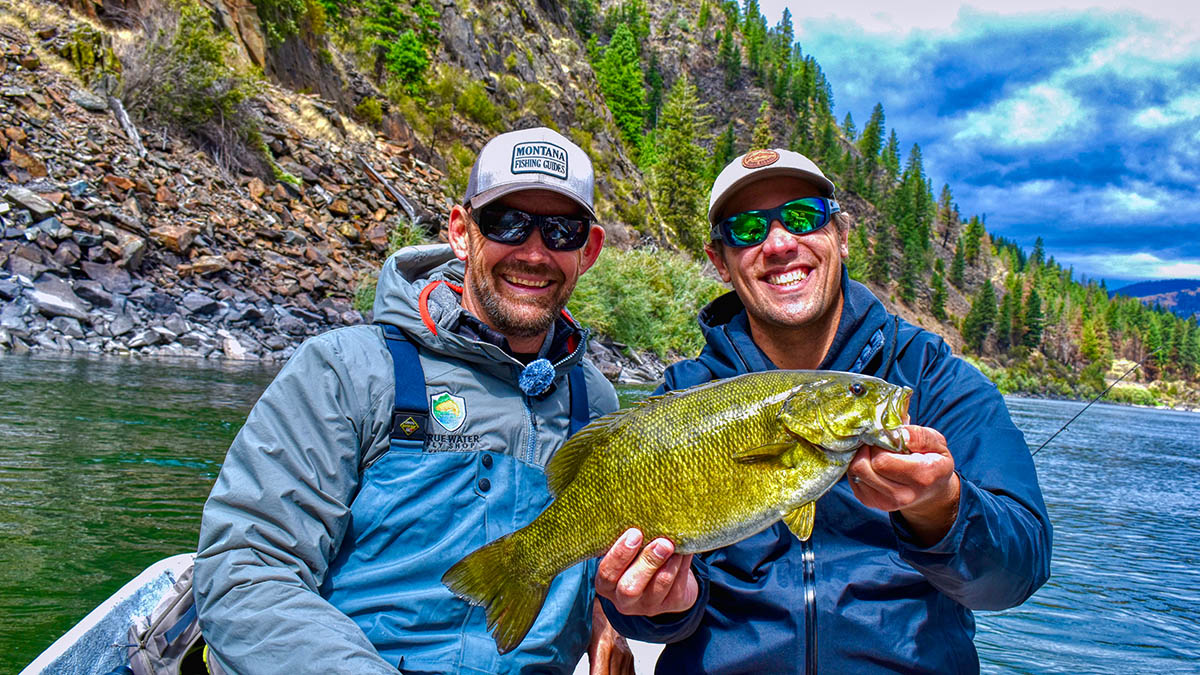
HOW TO TARGET BOTH
Without us knowing it, Rob took us to one of these zones, and it became quickly evident that we were throwing the right bait to have a blast catching both. That bait was the D2 jig.
The Trout Magnet D2 Jig consists of maribou tied on a unique jig head that imparts movement as the jig falls in the water column. It is the perfect size to mimic sculpins, minnows and crayfish and comes in a variety of colors to mimic each of these three. All three of these food sources are high protein and are worth a larger fish expending a little more energy to grab. That means as an angler, you are targeting the more aggressive or bigger fish with this technique.
From a drift boat, I targeted any and every ambush point. Big boulders, chunk rock banks, and drops below shoals all produced. Focus on placing the cast where you think the fish will hide and then let it fall. When you think the jig is near the bottom (typically between 2 and 8 seconds for most of the structure we fished) you give the jig a hard pop to make it jump in the water column. Then you let it fall again and repeat.
The rule I follow with this technique is to have 90% of the slack out of your line 99% of the time. The jig moves best when it falls on a semi-slack line, so you want to leave some slack almost all the time. The only time my line is ever tight is on the pop. If I feel weight on the pop, then I follow through with the hookset.
This technique proved incredibly effective for both trout fishing and smallmouth fishing in freestone rivers. The color of the jig made a difference on this trip. We went through blacks, whites, and then did best on the “fire craw” color. This D2 Jig has an olive back and a burnt orange belly. It was by far the most effective color for these conditions.
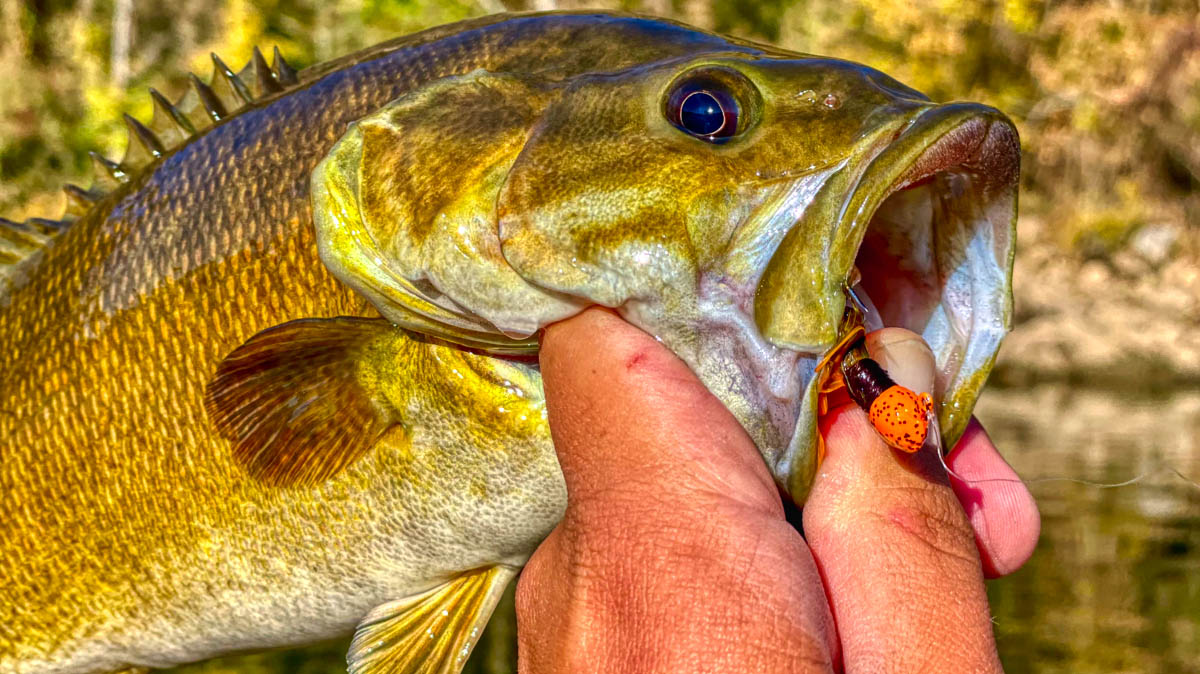
HOW DOES THIS ZONE MOVE?
As stated earlier, trout do best in water temperatures that are below 65 degrees, and smallies prefer water above the mid 60s.
There are three main sources of cold water for trout: springs, coldwater releases from dams (tailwaters), and snow /glacial melt from high altitude streams (typically greater than 6,000 feet). Two of the three are conducive to year round stable temperatures. Spring fed streams / rivers and tailwaters offer relatively stable year-round temperatures that are consistently in the 50s.
For a warm water species like the smallmouth bass, a 58 degree spring flowing in feels incredible on a cold January day. You will often find that the trout will spread out in the colder months and the smallmouth will move toward the warmest water they can find. A similar pattern can be at play in tailwaters, but typically to a lesser degree.
I remember a warm day in April on the Caney Fork River in middle Tennessee. We caught dozens of good trout and smallmouth bass in a section of the river that is often labeled “too warm for trout.” If it were July, you would still expect to catch smallmouth in that section, but definitely not a trout. I find that in tailwaters, it is more common for trout to spread out in the cooler months than for the smallmouth to consolidate by the dam.
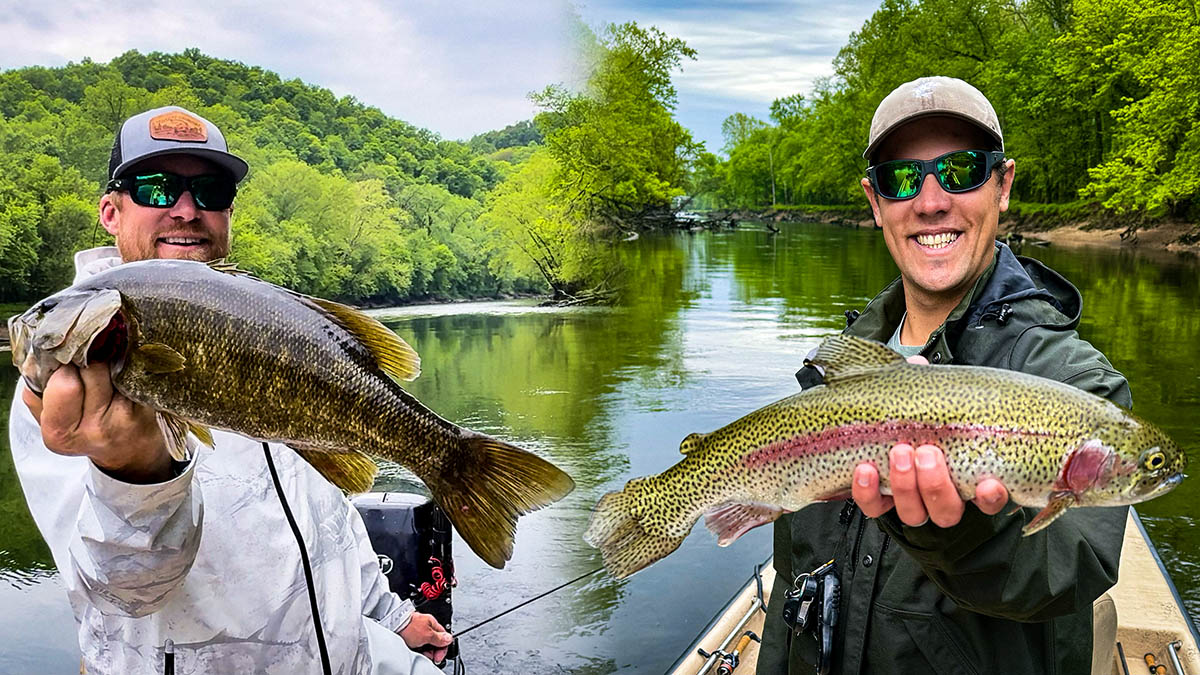
HOW DOES FOOD SOURCE CHANGE THIS ZONE?
Food is often the motivating factor for fish living where they do. A trout will not venture into warmer waters unless it supplies a lot more food, and likewise, a smallmouth will not venture into colder waters unless worthwhile food awaits. Earlier I mentioned sculpin. The sculpin is a prehistoric looking fish that lives amongst the rocks. It demands colder temperatures to survive and eats a lot of the same bugs young trout eat.
Within the last ten years, sculpin have been introduced to the Little Red River in Arkansas. They have absolutely decimated the once prolific sowbug population. Many anglers around here are happy to have them and are eager to see how they affect the growth rates of our brown trout. Smallmouth bass behave similarly to brown trout. When given the opportunity, they are eager to eat a sculpin darting from the rocks. In rivers where sculpin are thriving, you will typically find eager smallies well within the colder “trout” boundaries.
So again using a jig like the D2 Jig that mimics many of these cross-zone food sources will provide you with some great fishing action regardless of the species most prolific to the area at that time.
